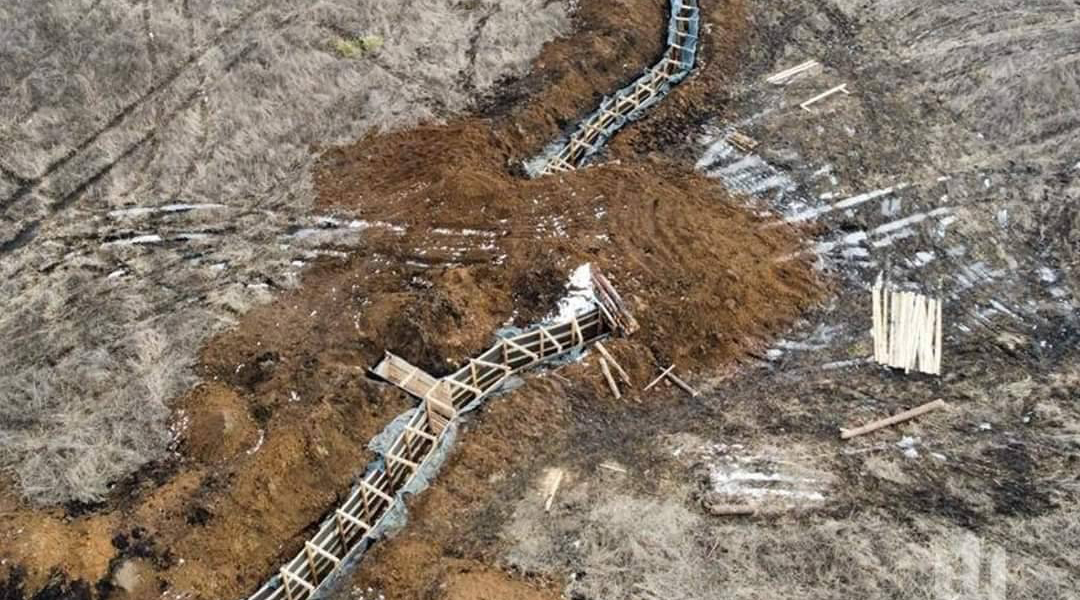The Support Forces of the Armed Forces of Ukraine (AFU) are performing several critical tasks in support of the Ukrainian defenders fighting at the front line. Major General Dmytro Hereha, newly appointed Commander of the AFU’s Support Forces elaborates, in a blitz interview to Ukrinform, on how defense lines are being built and on other tasks assigned to the AFU’s Support Forces.
- On May 9, President Volodymyr Zelensky appointed You the commander of the Support Forces of the Armed Forces of Ukraine. What are the primary tasks assigned to You and what’s the first priority You make in your work?
- The Support Forces comprise a a separate branch of the Armed Forces of Ukraine, consisting of five prime military components: Engineering Troops; Chemical, Biological, Radiological and Nuclear (CBRN) Defense Forces; Military Topographic Service, Hydrometeorological Service, and Canine Service. When and where hostilities are taking place, engineering troops are performing a wide range of tasks, with the primary ones including engineering reconnaissance of terrain; building field fortifications and camouflage on combat positions; setting up and maintaining ferry crossings and pontoon bridges in support of infiltration operations; installation of engineering barriers and breaching safe passages through minefields and other obstacles; as well as conducting mine decontamination operations. Every day, our bomb disposal units perform the tasks involving terrain decontamination of landmines and unexploded ordnances, rebuilding and restoring transport infrastructures in de-occupied areas, and providing assistance to the local population.
Our key component, the engineering troops, account for the largest percentage of the tasks assigned to the Support Forces, regarding mostly the construction and maintenance of field fortifications.
- Could You elaborate in more detail about the work on construction and support of field fortifications?
- Engineering and positional elements of the Support Forces perform field fortification works in designated areas. Our engineering troops are not the only who are charged to care for field fortifications. In particular, the Defense Ministry’s State Service for Special Transport and regional military administrations are assigned their own tasks in this area, building up and developing further their respective field fortification infrastructures. By the way, the Cabinet of Ministers of Ukraine has adopted a resolution on this matter, which spells out everything in clear terms - who and for what is responsible. This is because servicemen of engineering troops often perform their tasks under fire, and a civilian contractor who is not a military serviceman cannot be sent to the second line of defense.

- Do you monitor the condition of fortification structures after construction is completed?
- The arrangement of field fortifications is a never-ending process. Even when, hypothetically, everything has been constructed, we will anyway continue with tightening and improving the defense lines. Our engineering and positional units build strongpoints on the second line of defense, which are then handed over to mechanized formations.
We are also installing advanced anti-drone defenses; I will not elaborate on this so as not to reveal all the secrets to the Russians, but what our units are building will save many of our soldiers’ lives.
- Sometimes there are complaints that concrete structures are rarely used in constructing fortifications.
- Yes, I often encounter comments online recommending just pouring everything with concrete. It's a science to construct a strongpoint. Yes, we use wood in the construction of communication passages, and use concrete for fire resistant structures (bunkers). I will explain why.
Wood lasts for 2-3 years, it is easily replaced, quickly installed, and, when hit by a projectile, does not produce as many fragments released into the environment as concrete.
Due to the strongholds that we’ve built, many of our infantry soldiers’ lives are being saved, and our positional engineers are working hard, knowing what their work means as Ukraine is defending itself in the face of Russia’s war of aggression.
- Does the enemy target our soldiers working at fortification construction sites?
- The construction of strongholds on the second line involves a significant life threat to the soldiers performing it. Whenever the Russians detect our earthmoving machines working, they immediately try to destroy them. For them, engineering equipment is a priority target. Up to a thousand strongholds have been constructed by engineering troops of the Support Forces over 2022-2023, and several thousand more have been built in 2024 so far.
Construction works continue in full swing. I know without a doubt that the work being done by engineering troops of the Support Forces will save lots of lives of our infantry soldiers, will ensure there is a solid and sustainable defense capacity, and make sure the flow of “gift packages” flying against Russian invaders is never ending.
For your information:
Commander of the Support Forces of the Armed Forces of Ukraine, Major General Dmytro Hereha was born in the Khotyn District, Chernivtsi Oblast.
In 1993, he graduated from the Kamyanets-Podilskiy Higher Military Engineering Officer College. Dmytro Hereha served as leader of a platoon and of an engineer and sapper company, chief of headquarters and the second-in-command of a battalion, then the first-in-command of the 12th Engineer Regiment, chief of the operational logistics division at the headquarters of the 8th Army Corps, and the chief of the operational logistics division at the Northern Operational Command.
Iryna Kozhuhar, columnist
Photo courtesy of the Armed Forces’ Support Forces Command

